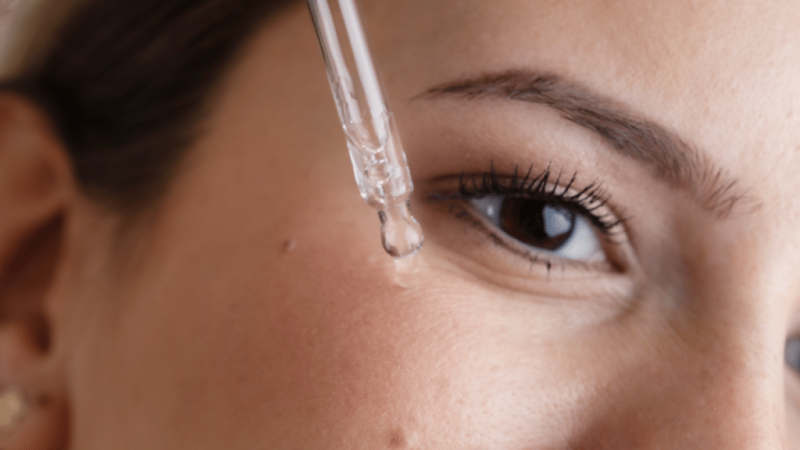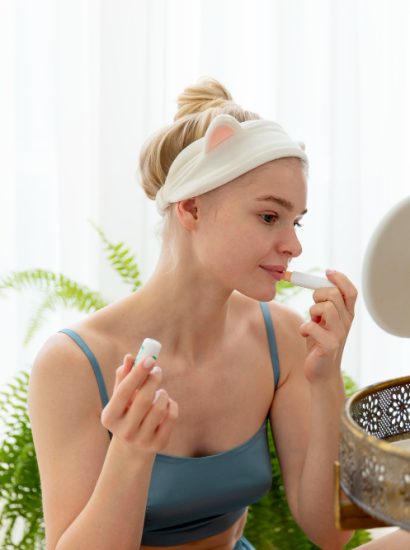In the ever-evolving world of skincare, new ingredients regularly make headlines. But while many come and go, some tried-and-true actives remain underrated heroes. Azelaic acid is one of them. Not as flashy as retinol or vitamin C, this multitasking ingredient often flies under the radar despite its clinically proven benefits for a wide range of skin concerns.
From battling acne and rosacea to evening out skin tone, azelaic acid deserves far more attention than it gets. In this in-depth guide, we explore exactly why azelaic acid is worth adding to your skincare routine, no matter your skin type or concern.
What Is Azelaic Acid?
Azelaic acid is a naturally occurring dicarboxylic acid found in grains like barley, wheat, and rye. In skincare, it’s synthetically produced to ensure stability and purity.
Azelaic acid has anti-inflammatory, antibacterial, and melanin-inhibiting properties. It works at a cellular level to address common skin conditions without causing irritation or sensitivity. Approved in many countries for the treatment of acne and rosacea, it’s often available both over the counter and in prescription-strength formulations.
Unlike more aggressive actives, azelaic acid is known for being gentle and non-comedogenic, making it suitable for even the most sensitive skin types.
How Azelaic Acid Works on the Skin
Azelaic acid is a multi-action compound, which means it doesn’t just target one issue—it addresses several at once. Here’s how it works:
- Antibacterial: Kills acne-causing bacteria (Propionibacterium acnes), reducing breakouts.
- Anti-inflammatory: Soothes redness and calms irritated skin.
- Keratin regulation: Prevents clogged pores by normalizing skin cell turnover.
- Tyrosinase inhibition: Slows melanin production, helping fade dark spots and hyperpigmentation.
Because it targets multiple skin issues simultaneously, azelaic acid is especially useful in streamlined skincare routines.
The Key Benefits of Azelaic Acid
a. Fights Acne Effectively
Azelaic acid penetrates pores and reduces inflammation, making it an effective treatment for both inflammatory and non-inflammatory acne. It not only clears existing pimples but also prevents new breakouts from forming.
b. Calms Rosacea and Redness
One of azelaic acid’s FDA-approved uses is for treating rosacea. It minimizes bumps, redness, and irritation often seen in rosacea-prone skin, making it a go-to for people with reactive skin conditions.
c. Reduces Hyperpigmentation
By inhibiting melanin synthesis, azelaic acid fades post-acne marks, sunspots, and melasma. It’s considered a safer, gentler alternative to hydroquinone for treating uneven skin tone.
d. Safe for Sensitive Skin
Unlike harsher actives, azelaic acid does not compromise the skin barrier. It’s often recommended for sensitive, allergy-prone, or pregnant individuals who need effective but gentle skincare.
e. Improves Texture and Radiance
Over time, regular use helps to refine skin texture, reduce roughness, and promote a healthy glow. It also plays well with other ingredients, making it easy to layer into your existing regimen.
Who Should Use Azelaic Acid?
One of the best things about azelaic acid is its universal suitability. It’s beneficial for:
- Teenagers and adults with acne
- Individuals with rosacea or facial redness
- People dealing with melasma or dark spots
- Sensitive or allergy-prone skin types
- Pregnant and breastfeeding women (azelaic acid is considered pregnancy-safe)
- Oily or combination skin types (as it regulates sebum and prevents clogged pores)
Azelaic acid is non-irritating and non-photosensitizing, meaning it won’t make your skin more vulnerable to sun damage—though SPF is still essential.
How to Use Azelaic Acid in Your Skincare Routine
Azelaic acid can easily be added to most routines and is available in gels, creams, foams, and serums.
When to Use It:
- 1–2 times per day, depending on tolerance
- Most start with evening use, then build up to morning and evening applications
Where It Fits:
- After cleansing and toning
- Before moisturizer and sunscreen
Suggested Routine:
- Cleanser
- Toner (optional)
- Azelaic acid (pea-sized amount)
- Moisturizer
- Sunscreen (AM only)
Tips:
- Combine with niacinamide or hyaluronic acid for enhanced results
- Avoid pairing immediately with strong acids or retinoids until your skin builds tolerance
- Store in a cool, dry place, away from direct sunlight
Best Azelaic Acid Products to Try
a. The Ordinary Azelaic Acid Suspension 10%
A budget-friendly favorite. This creamy, silicone-based formula improves brightness and texture. Great for beginners.
b. Paula’s Choice 10% Azelaic Acid Booster
Combines azelaic acid with salicylic acid and licorice root. Lightweight and effective for pigmentation and blemishes.
c. Naturium Azelaic Topical Acid 10%
Pairs azelaic acid with niacinamide and zinc. Excellent for oily or acne-prone skin.
d. Finacea Gel (15%)
Prescription-strength azelaic acid, ideal for rosacea and persistent acne. Gel texture, fast absorption.
e. The Inkey List Azelaic Acid
Affordable and includes other skin-soothing ingredients like allantoin. Suitable for beginners and layering.
Common Mistakes to Avoid
Azelaic acid is generally safe, but misuse can limit its effectiveness or cause minor irritation.
a. Overuse
Using it too frequently at first can cause dryness or tingling. Start with a few times a week.
b. Skipping SPF
While azelaic acid doesn’t make your skin more sun-sensitive, UV rays worsen hyperpigmentation, so sunscreen is still vital.
c. Mixing Too Many Actives
Azelaic acid is versatile, but overloading your routine with retinol, vitamin C, and AHAs/BHAs can lead to over-exfoliation.
d. Expecting Overnight Results
It takes 4–12 weeks to see visible improvements, especially for dark spots or rosacea symptoms. Be consistent and patient.
Conclusion
Azelaic acid is the unsung hero of skincare—backed by research, gentle on the skin, and effective across multiple concerns. Whether you struggle with acne, redness, dark spots, or texture, azelaic acid provides a simple yet powerful solution with minimal risk of irritation.
Unlike trend-driven ingredients that come and go, azelaic acid has stood the test of time. Its multifunctional benefits, low side effect profile, and ease of use make it an ideal addition to any skincare routine—especially if you’re aiming for healthy, calm, and even-toned skin.
If you’re looking for a single ingredient to simplify and elevate your skincare, azelaic acid definitely deserves a place on your shelf.
FAQs
1. How long does it take to see results with azelaic acid?
Results vary, but most people begin to notice improvements in 4 to 8 weeks, with full benefits often seen after 12 weeks of consistent use.
2. Can I use azelaic acid every day?
Yes, many people tolerate daily or twice-daily use. Start slowly (2–3 times/week) and increase based on your skin’s comfort.
3. Does azelaic acid work for hormonal acne?
Azelaic acid can help reduce inflammation and clogged pores, but for hormonal acne, it works best alongside other treatments like retinoids or oral medications.
4. Is azelaic acid safe to use with other active ingredients?
Generally, yes. It pairs well with niacinamide, hyaluronic acid, and some retinoids, but you should introduce each product slowly to avoid irritation.
5. Can I use azelaic acid while pregnant?
Yes! Azelaic acid is considered one of the safest acne and pigmentation treatments for use during pregnancy and breastfeeding.
Also read: Azelaic Acid Explained: The Underrated Skincare Ingredient You Should Try





